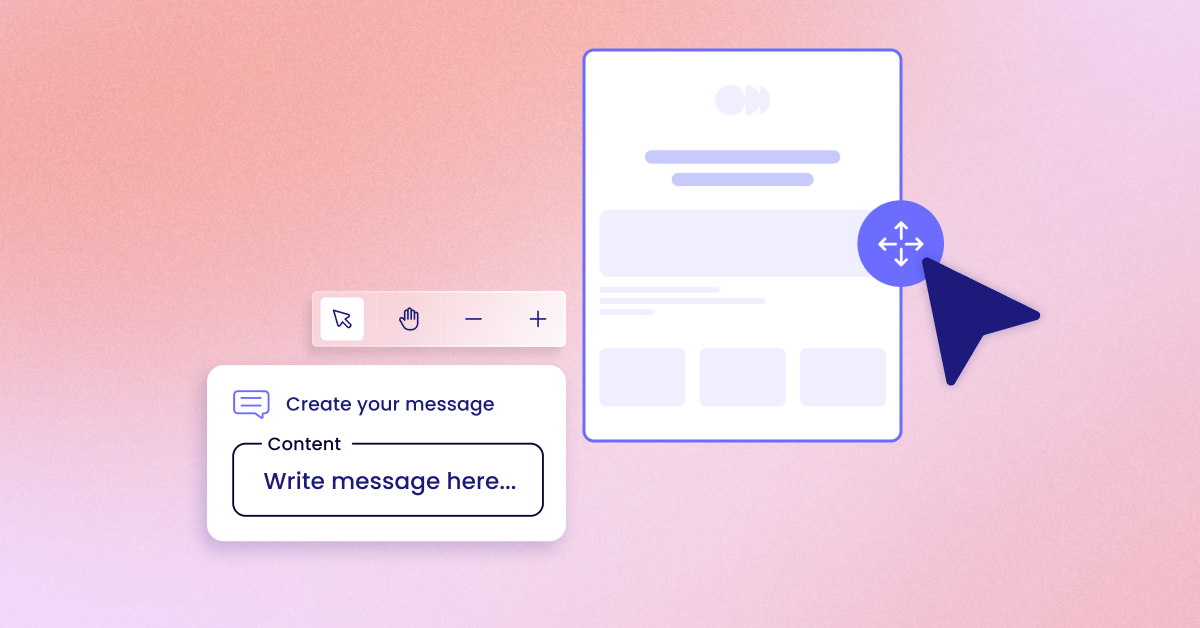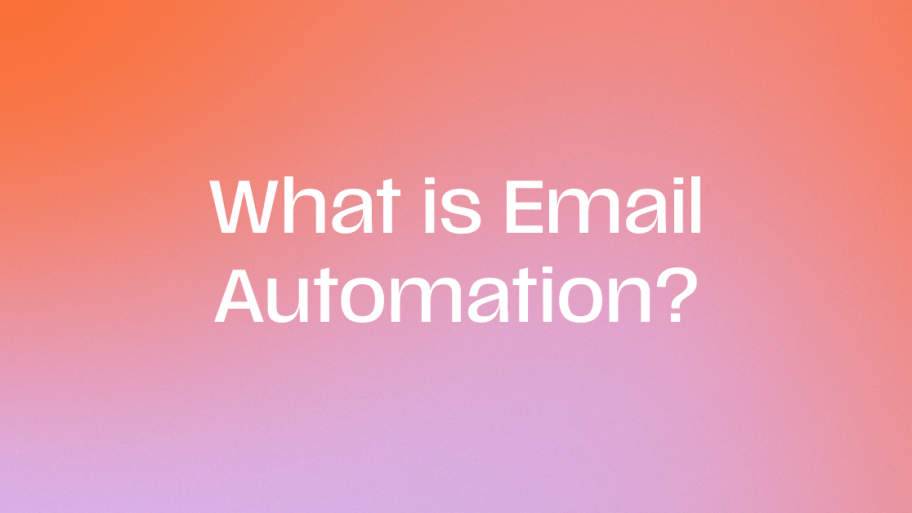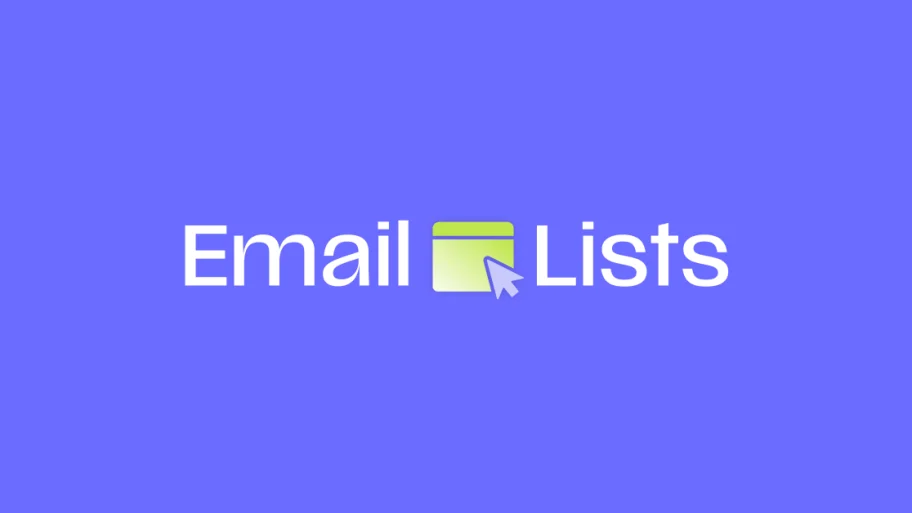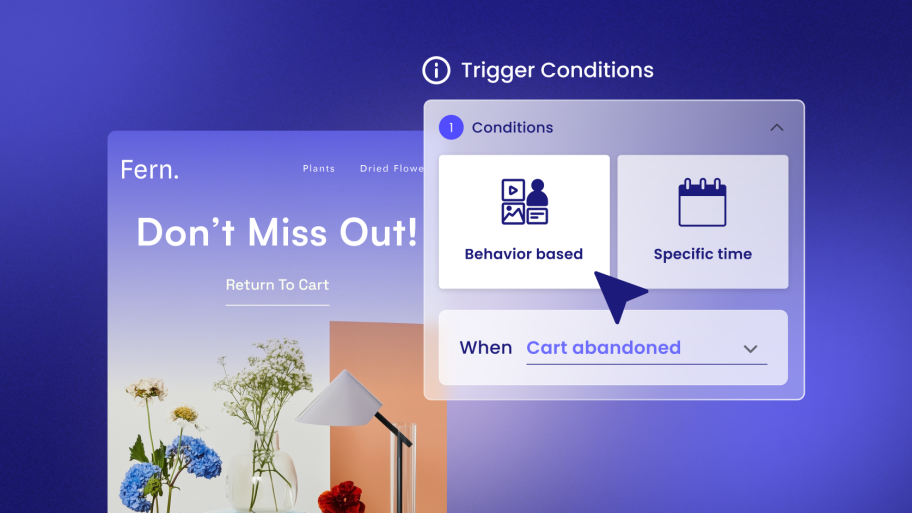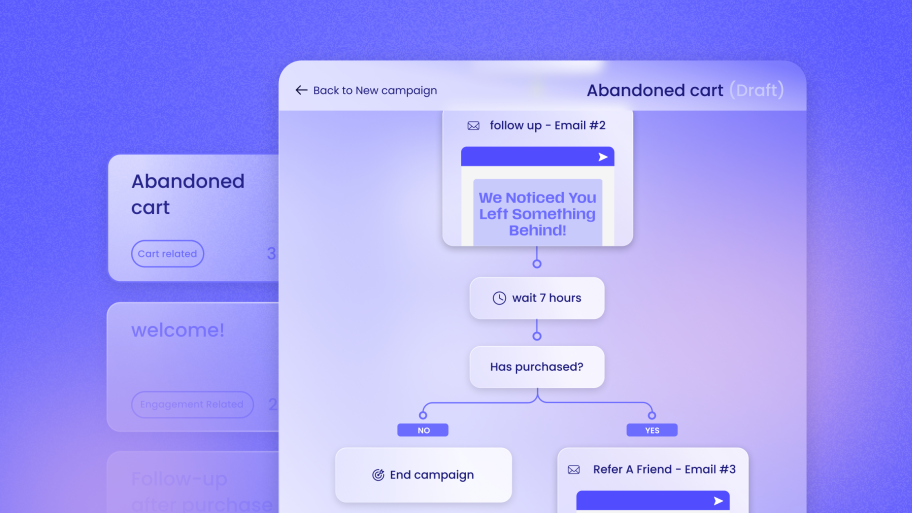Key Takeaways
- Native Integration Matters: Platforms built specifically for WordPress, or “WordPress-native,” offer a smoother experience. They reduce plugin conflicts, simplify management by keeping you in one dashboard, and create a more reliable connection to your WooCommerce data.
- It’s a Communication Toolkit, Not Just a Newsletter: The best solutions today go beyond email. They combine email marketing, SMS, and powerful automation into a single platform. This allows you to create cohesive customer journeys that boost engagement and sales.
- Focus on Your Business Model: The right platform for a solo store owner might not be the best for a web creator or agency. Creators should look for tools that allow them to offer marketing as a service, opening up new recurring revenue streams and strengthening client relationships.
- Automation is Your Growth Engine: Look for platforms with pre-built automation flows, like abandoned cart reminders and welcome series. These features work 24/7 to recover lost sales and nurture new customers, providing a clear return on investment.
- Data Should Be Simple and Actionable: Your platform should provide clear, real-time analytics that show you exactly how your marketing efforts are impacting revenue. This is essential for making smart decisions and, for web creators, for demonstrating value to clients.
The 7 Best WooCommerce Newsletter Platforms in 2025
1. Send by Elementor
Send by Elementor is not just another email marketing tool; it’s a complete communication toolkit designed from the ground up for WordPress and WooCommerce. Its core identity revolves around empowering Web Creators—the freelancers and agencies who build websites for a living. It provides them with the tools to expand their services beyond one-off website builds, creating opportunities for recurring revenue and long-term client partnerships.
What makes it stand out? Send brings everything you need—Email, SMS, Automation, Segmentation, and Analytics—directly into the WordPress dashboard you already know. This eliminates the common headaches of juggling external platforms, dealing with complex APIs, or worrying about data syncing issues. It’s a solution born for WordPress, built to simplify marketing and amplify results.
Why It’s a Top Choice for Web Creators & WooCommerce Stores
The entire philosophy behind Send is to address the specific pain points of Web Creators. It transforms their business model from simply delivering a website to providing ongoing, measurable value.
- Truly WordPress-Native Experience: Unlike platforms that merely sync with WordPress, Send is built for it. This means a familiar user interface, seamless integration, and the elimination of common compatibility problems. You manage everything without ever leaving your WordPress dashboard, which overcomes the complexity and fragmentation of other marketing platforms.
- Empowers Web Creators: Send was designed to help creators elevate their client offerings. Instead of handing a finished website over and walking away, you can offer powerful Email and SMS marketing services. This creates a path to sustainable, recurring revenue and makes you an indispensable partner in your client’s growth. You stop just building sites and start building businesses.
- An All-in-One Communication Hub: Send consolidates all your essential marketing tools into one place. You get email marketing, SMS marketing, sophisticated automation flows, audience segmentation, and clear analytics without needing to install and manage multiple, separate plugins. It’s a comprehensive toolkit, not just a newsletter tool.
- Effortless Setup and Management: The platform is built to be intuitive, lowering the barrier to entry for marketing automation. With pre-built workflows for common scenarios like abandoned carts or welcome series, you can implement powerful strategies quickly. The “set-and-forget” approach simplifies ongoing management, saving you and your clients valuable time.
Key Features Deep Dive
Send’s features are designed to work together to drive engagement, build loyalty, and increase revenue for WooCommerce stores.
- Email & SMS Marketing Automation: At its core, Send allows you to design, send, and automate email campaigns. The drag-and-drop email builder makes creating professional, responsive emails simple, even if you’re not a designer. Ready-made templates, based on Elementor’s design best practices, give you a running start. Crucially, it also integrates SMS marketing and automation, allowing you to engage customers directly on their phones with timely text messages.
- Powerful Marketing Automation Flows: This is where Send truly shines. You can use pre-built or custom workflows to automate your marketing.
- Abandoned Cart Recovery: Automatically send a series of emails or SMS messages to customers who leave items in their cart without checking out.
- Welcome Series: Nurture new subscribers and customers with an automated sequence of messages that introduces your brand and encourages their first purchase.
- Re-engagement Campaigns: Win back customers who haven’t purchased in a while with special offers or updates.
- Advanced Audience Segmentation: Generic, one-size-fits-all marketing doesn’t work. Send allows you to group contacts based on specific criteria like their behavior, demographics, or purchase history. This means you can send highly targeted, relevant messages that are more likely to convert. For example, you can create a segment for VIP customers who have spent over a certain amount or a segment for users who have purchased a specific product.
- Efficient Contact Management: Managing your contacts is straightforward. You can easily import existing lists or automatically sync contacts directly from your WooCommerce store and website forms. This ensures your audience data is always up-to-date without manual effort.
- Real-Time Analytics & Demonstrable ROI: One of the biggest challenges for Web Creators is proving their ongoing value to clients. Send solves this with clear, real-time analytics inside the WordPress dashboard. You can track campaign performance, see exactly how much revenue each email or SMS generates, and monitor customer engagement. This data makes it easy to demonstrate a clear return on investment, justifying your services and strengthening client trust.
Who is Send by Elementor Best For?
Send is specifically tailored for a few key audiences:
- Individual Freelancers and Agencies: Any Web Creator using WordPress, especially those building WooCommerce stores, will find Send to be a natural fit. It aligns perfectly with their existing workflow and business needs.
- Creators New to Offering Marketing: If your clients are asking for “marketing stuff” and you’re not sure where to start, Send is the perfect entry point. It integrates seamlessly, allowing you to start with a simple but powerful automation like abandoned cart recovery. There are no complex APIs to manage, so you can provide effective communication services right away.
- Experienced Agencies: For agencies tired of outsourcing marketing or dealing with clunky external tools, Send offers a streamlined solution. You can bring Email and SMS automation in-house, offer more value with retention campaigns, and use the built-in analytics to build profitable, long-term partnerships—all within WordPress.
Summary
Send by Elementor is the ideal choice for Web Creators who want to grow their business by helping their clients grow theirs. It’s a powerful, WordPress-native communication toolkit that simplifies marketing while delivering sophisticated results. By combining email, SMS, and automation in a single, easy-to-use platform, it empowers creators to expand their offerings, secure recurring revenue, and build lasting client relationships.
2. Mailchimp for WooCommerce
Mailchimp is an established email marketing service provider. For WooCommerce integration, it relies on a specific plugin to connect a WordPress site to its external software-as-a-service (SaaS) platform.
Integration and Architectural Model
The “Mailchimp for WooCommerce” plugin facilitates a one-way data synchronization from a WooCommerce store to the Mailchimp platform. It transmits customer data, order history, and product information. All campaign creation, audience management, automation configuration, and analytics review are performed within the Mailchimp web application, not the WordPress dashboard. This model separates the marketing function from the core website management environment.
Key Functional Components
- Email Editor: The platform provides a drag-and-drop editor for constructing email campaigns. A library of pre-designed templates is available for user modification.
- Marketing Automation: The system supports automation triggers based on synced e-commerce data. Standard workflows include abandoned cart notifications, welcome emails for new audience members, and product recommendation emails based on past purchase behavior.
- Audience Segmentation: Users can create audience segments using logical conditions applied to the data synced from WooCommerce. This includes segmentation by purchase frequency, total order value, and specific products purchased.
- Reporting: The platform generates reports on standard email engagement metrics such as open rate, click-through rate, and conversion rate. It also provides e-commerce performance metrics, including revenue attributed to specific email campaigns.
- Additional Tools: Depending on the subscription tier, the platform may also offer functionalities for creating landing pages, running digital advertising campaigns, and a basic customer relationship management (CRM) system.
Primary Use Case
This platform is functionally suited for businesses that require a dedicated email marketing solution and are comfortable with managing marketing operations on an external platform separate from their WooCommerce admin panel. It is often used by individuals or teams who may have prior experience with the Mailchimp interface.
3. Klaviyo
Klaviyo is a marketing automation platform with a technical focus on data-driven e-commerce. It is architected to process and analyze large datasets to enable granular segmentation and personalization.
Integration and Architectural Model
Integration with WooCommerce is achieved through a dedicated WordPress plugin that establishes a data pipeline to the Klaviyo platform. This plugin syncs both historical and real-time data, including customer profiles, order details, product catalog information, and website behavioral events (e.g., “Viewed Product,” “Started Checkout”). All marketing operations, from flow design to campaign analysis, are executed within Klaviyo’s external web-based dashboard.
Key Functional Components
- Advanced Segmentation Engine: Klaviyo’s core functionality is its segmentation capability. It allows users to build complex audience segments by combining event-based data, customer properties, and predictive analytics metrics.
- Automation Flow Builder: The platform includes a visual workflow builder for creating sophisticated automation sequences. These flows can incorporate conditional splits (if/then branches), time delays, and triggers based on a wide range of customer actions.
- Multi-Channel Capabilities: The system integrates both email and SMS marketing channels. Users can incorporate both communication types within a single automation flow, allowing for omnichannel campaign execution.
- Predictive Analytics: The platform applies data science models to customer data to generate predictive insights, such as customer lifetime value (CLV), churn risk, and predicted gender. These metrics can be used for advanced targeting.
- A/B Testing Framework: Klaviyo provides tools for systematically A/B testing various components of email campaigns, including subject lines, content blocks, and send times, to optimize performance based on statistical data.
Primary Use Case
Klaviyo is designed for data-centric e-commerce businesses that require advanced automation and segmentation capabilities to execute highly personalized marketing strategies. It is typically adopted by mid-market to enterprise-level stores with dedicated marketing personnel who can leverage its complex feature set.
4. HubSpot for WooCommerce
HubSpot is an extensive business software platform centered around a core Customer Relationship Management (CRM) system. Its offerings are modularized into “Hubs,” including Marketing Hub, Sales Hub, and Service Hub. Email marketing is a function within the Marketing Hub.
Integration and Architectural Model
The official HubSpot for WooCommerce plugin serves as a data bridge, synchronizing WooCommerce customers, orders, and products into the central HubSpot CRM. This process populates contact records in HubSpot with detailed e-commerce activity. All marketing campaigns, workflows, and data analysis are then managed within the HubSpot ecosystem, which operates externally to WordPress.
Key Functional Components
- Centralized CRM: The foundational component is the HubSpot CRM. All data from WooCommerce is structured around contact, company, and deal records, providing a unified view of the customer lifecycle.
- Email and Automation Tools: The Marketing Hub includes an email editor and a visual workflow builder. Automation can be triggered by any data point within the CRM, including e-commerce actions, form submissions, and sales activities.
- Inbound Marketing Suite: Beyond email, the platform offers a comprehensive set of tools for other marketing functions, such as blogging, SEO, social media scheduling, landing page creation, and lead capture forms.
- Sales and Service Modules: The platform can be expanded with Sales Hub (for pipeline management and sales automation) and Service Hub (for ticketing and customer support), creating a fully integrated front-office system.
- Reporting Dashboards: HubSpot provides customizable reporting dashboards that can track key performance indicators across marketing, sales, and service departments, linking marketing activities directly to revenue.
Primary Use Case
HubSpot is best suited for businesses seeking a fully integrated CRM to manage all customer-facing operations. It is a logical choice for WooCommerce stores that are planning to adopt or are already using the wider HubSpot platform for their sales and customer service processes, in addition to marketing.
5. Omnisend
Omnisend is a marketing automation platform designed for e-commerce, with a primary technical emphasis on omnichannel communication. It enables the integration of email, SMS, and web push notifications within unified workflows.
Integration and Architectural Model
Connection to a WooCommerce store is established via a WordPress plugin. This plugin syncs contacts, products, and order data to the external Omnisend platform. It also facilitates the embedding of Omnisend’s lead capture forms on the WordPress site. All campaign management and automation are performed within the Omnisend web application.
Key Functional Components
- Omnichannel Automation: The platform’s defining feature is its ability to create automation workflows that combine multiple communication channels. A user can design a flow that sends an email, then an SMS message based on the user’s interaction with the email, followed by a web push notification.
- Email and SMS Marketing: The platform provides standard toolsets for both email and SMS campaigns, including editors, templates, and e-commerce-specific automation triggers.
- Web Push Notifications: A core channel within the platform, allowing businesses to send browser-based notifications to subscribers even when they are not actively on the store’s website.
- Audience Segmentation: The system allows for the segmentation of contacts based on their shopping behavior (e.g., products purchased, money spent), campaign engagement (e.g., email opens, clicks), and profile data.
- Lead Capture Forms: Omnisend offers a variety of embeddable forms to capture new subscribers, including pop-ups, static forms, and gamified “Wheel of Fortune” widgets.
Primary Use Case
Omnisend is a suitable platform for e-commerce businesses that intend to implement a marketing strategy actively utilizing email, SMS, and web push notifications in concert. It is particularly geared towards stores that see web push notifications as a key component of their customer engagement plan.
6. MailPoet
MailPoet is an email marketing solution that operates as a WordPress plugin. Its architecture is fundamentally different from external SaaS platforms, as its entire functionality resides within the WordPress admin environment. It was acquired by Automattic, the company behind WooCommerce.
Integration and Architectural Model
MailPoet functions as a fully native WordPress plugin. There is no external data synchronization; it directly accesses the WooCommerce database for customer and order information. All tasks, from email design and subscriber management to automation setup and analytics review, are performed within the WordPress dashboard, providing a unified administrative experience.
Key Functional Components
- WordPress-Native Operation: The entire user interface and all functionalities are integrated directly into the WordPress admin panel, offering a familiar environment for WordPress users.
- Email Designer: A drag-and-drop editor is included for creating newsletters and automated emails. The plugin comes with a selection of responsive templates that can be customized.
- WooCommerce-Specific Automations: MailPoet provides pre-configured automated email workflows tailored for WooCommerce. These include abandoned cart recovery emails, post-first-purchase follow-ups, and targeted emails for customers who have purchased from a specific product category.
- Segmentation: Users can segment their subscriber lists using data directly from the WooCommerce database, such as customer purchase history or total spending.
- Integrated Sending Service: To manage email deliverability, MailPoet provides its own sending infrastructure (MailPoet Sending Service) designed to handle both marketing and transactional emails generated by WordPress and WooCommerce.
Primary Use Case
MailPoet is designed for WooCommerce users who prioritize operational simplicity and a fully native WordPress experience. It is a strong choice for those who require a robust email marketing solution but do not have a need for integrated SMS or other marketing channels managed from the same platform.
7. Brevo (formerly Sendinblue)
Brevo is a multi-functional digital marketing platform that bundles a wide range of tools. It began as an email marketing service (Sendinblue) and has since expanded its feature set to cover a broader spectrum of marketing and sales functions.
Integration and Architectural Model
Integration with WooCommerce is handled by a WordPress plugin that connects the store to the external Brevo platform. The plugin’s primary functions are to sync contacts and to configure the routing of WooCommerce’s transactional emails through Brevo’s SMTP service. Marketing automation, such as abandoned cart flows, is set up and managed within the Brevo web application.
Key Functional components
- Multi-Tool Platform: Brevo’s offering is a suite of tools that includes email marketing, SMS marketing, a website chat widget, a sales CRM, and builders for landing pages and signup forms.
- Marketing Automation Editor: The platform includes a visual editor for creating automation workflows based on contact data and behavioral triggers from the connected WooCommerce store.
- Transactional Email (SMTP) Service: A core strength of the platform is its reliable SMTP relay service, which is often used to improve the deliverability of critical transactional emails (e.g., order confirmations, password resets) sent from WooCommerce.
- Contact Management: It provides a central database for managing contacts and allows for segmentation based on demographic, behavioral, and transactional data.
- Pricing Model: Brevo’s pricing structure is often based on the volume of emails sent per month rather than the number of contacts stored, which can be cost-effective for users with large lists but moderate sending frequencies.
Primary Use Case
Brevo is a viable option for small to medium-sized businesses and WooCommerce store owners who are cost-sensitive and desire access to a broad array of marketing tools within a single subscription. It is especially useful for users who need a robust transactional email service in addition to their marketing campaign capabilities.
How to Choose the Best WooCommerce Newsletter Platform in 2025
Selecting the right platform involves looking beyond the feature list. You need to consider how the tool fits into your workflow, supports your business model, and helps you achieve your goals. Here are the key criteria to evaluate.
1. WordPress-Native vs. External Integration
This is one of the most critical decisions.
- WordPress-Native: A native solution like Send by Elementor or MailPoet operates entirely within your WordPress dashboard. The main advantages are a unified workflow, a familiar interface, and reduced potential for conflicts. Data is instantly available, eliminating sync lags or errors. This approach significantly simplifies management.
- External Integration: Platforms like Mailchimp, Klaviyo, or HubSpot connect to your store via a plugin but are managed on their own websites. They may offer more specialized or complex features, but this comes at the cost of having to learn and manage a separate platform. This can create friction and potential data syncing issues.
Ask yourself: Do you want to manage everything in one place, or are you comfortable switching between your WordPress site and another application for your marketing?
2. Ease of Use and Learning Curve
Your time is valuable. A platform with an intuitive interface and a low barrier to entry means you can get your campaigns running faster. Look for features like:
- Drag-and-drop email builders.
- Pre-built templates for emails and automation flows.
- Clear and straightforward navigation.
A complex platform with a steep learning curve might be powerful, but it’s only useful if you have the time and technical expertise to master it.
3. Core Features: Email, SMS, and Automation
A modern “newsletter” platform should be a complete communication toolkit. Evaluate what channels you need now and in the future.
- Email Marketing: This is the baseline. All platforms on this list do it well.
- SMS Marketing: The ability to send text messages is increasingly important for flash sales, shipping updates, and abandoned cart recovery. Platforms like Send, Klaviyo, and Omnisend integrate it seamlessly.
- Automation: This is the engine that drives growth. A good platform must have robust automation capabilities, especially for e-commerce triggers like abandoned carts, post-purchase follow-ups, and welcome series.
4. Analytics and ROI Tracking
If you can’t measure it, you can’t improve it. Your platform must provide clear, actionable analytics. Most importantly, you need to see the direct financial impact of your efforts. Look for revenue attribution features that show you exactly how much money each campaign generates. For Web Creators, this is non-negotiable, as it’s how you prove your value to clients.
5. Scalability and Pricing
Your business will grow, and your marketing platform should be able to grow with it. Consider the pricing model:
- Is it based on the number of contacts, the number of emails sent, or both?
- Are the pricing tiers fair and transparent?
- Does the platform become prohibitively expensive as your list grows?
Choose a platform with a scalable model that won’t punish you for your success.
6. Focus on Your Business Model
Finally, consider who the platform was built for.
- Are you a store owner managing your own marketing? A simple, all-in-one solution might be best.
- Are you a Web Creator or agency? A platform like Send by Elementor is designed for your specific business model. It’s not just about the features; it’s about empowering you to offer new services, generate recurring revenue, and build stronger client relationships.
Choosing a tool that understands and supports your business goals will always yield better results than a generic one.
Frequently Asked Questions (FAQ)
1. What is a WooCommerce newsletter platform? A WooCommerce newsletter platform is a software tool that integrates with your online store to help you communicate with your customers via email and, often, other channels like SMS. It goes beyond sending simple newsletters to include automated marketing campaigns, customer segmentation, and performance analytics to help you increase sales and build customer loyalty.
2. Why is a WordPress-native platform often better? A WordPress-native platform is built to work seamlessly inside your WordPress dashboard. This offers several advantages: a single point of management, a familiar interface, reduced plugin conflicts, and no data syncing errors between your website and an external service. It simplifies your workflow significantly.
3. Can I use SMS marketing with WooCommerce? Yes. Many modern platforms, such as Send by Elementor, Klaviyo, and Omnisend, offer integrated SMS marketing. This allows you to send text messages for things like order confirmations, shipping updates, flash sale announcements, and abandoned cart reminders directly from your marketing platform.
4. What is an “abandoned cart” automation? An abandoned cart automation is a sequence of emails or SMS messages that are automatically sent to a customer who adds items to their shopping cart but leaves your website without completing the purchase. This is one of the most effective automations for any e-commerce store, as it recovers potentially lost revenue.
5. How do I measure the ROI of my email marketing? You measure the Return on Investment (ROI) by tracking how much revenue is generated directly from your email campaigns and comparing it to the cost of the platform and your time. The best platforms have built-in revenue attribution, which automatically tracks when a customer clicks an email and then makes a purchase, showing you the exact sales value of each campaign.
6. Do I need a separate platform for transactional emails? Not necessarily. Many platforms, including MailPoet and Brevo, can handle both marketing emails (like newsletters) and transactional emails (like order confirmations and password resets). Using one platform for both can simplify your setup, though some businesses prefer to keep them separate for deliverability reasons.
7. How much should I expect to pay for a newsletter platform? Pricing varies widely. Some platforms offer a free tier for a limited number of contacts or email sends. Paid plans can range from $10-$20 per month for small lists to hundreds or thousands of dollars for large e-commerce operations. Most platforms use a usage-based model that scales with the size of your contact list or your sending volume.
8. What’s the difference between a newsletter platform and a CRM? A newsletter platform focuses on communication and marketing automation (email, SMS). A CRM (Customer Relationship Management) platform, like HubSpot, is a broader system for managing all customer data and interactions across marketing, sales, and service. While many CRMs have email marketing features, their primary purpose is to be a central database for all customer information.
9. Is Send by Elementor only for people who use the Elementor page builder? While Send is designed to work perfectly within the Elementor ecosystem, its core value as a WordPress-native communication toolkit is beneficial for any Web Creator or store owner using WordPress and WooCommerce, regardless of the page builder they use. The seamless integration with WordPress is a universal benefit.
10. How does audience segmentation help increase sales? Audience segmentation involves dividing your contact list into smaller, more targeted groups based on shared characteristics like purchase history, location, or engagement level. This allows you to send highly relevant messages. For example, sending a special offer on running shoes only to customers who have previously bought running gear will result in much higher conversion rates than sending it to your entire list.
11. Can I import my existing contacts into these platforms? Yes, all reputable platforms allow you to import your existing contact lists, typically by uploading a CSV file. They also have tools to ensure your imported list is clean and that you have permission to email those contacts, which is important for maintaining good deliverability.
12. What are the key benefits for a Web Creator offering these services? For a Web Creator, offering email and SMS marketing services creates a major business opportunity. It allows you to:
- Generate recurring monthly revenue instead of relying on one-off project fees.
- Provide ongoing, measurable value to your clients, which strengthens your relationship and increases their loyalty.
- Position yourself as a strategic partner in your client’s growth, not just a website builder.
13. How can I start offering email marketing services to my clients? Start with a platform that is easy to use and designed for creators, like Send by Elementor. Begin by offering a simple but high-impact service, such as setting up an abandoned cart automation. Use the platform’s analytics to show your client the direct revenue you’ve recovered for them. This proves your value and opens the door to providing more comprehensive marketing services.
